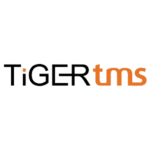 Most potential guests today do all of their accommodation research and booking online. Therefore, investing in digital marketing strategies is vital in building brand awareness and driving direct bookings to your property.
Most potential guests today do all of their accommodation research and booking online. Therefore, investing in digital marketing strategies is vital in building brand awareness and driving direct bookings to your property.
Search engine marketing (SEM) and metasearch marketing are becoming more important for properties to use in order to compete against other hotels and OTAs for increased website traffic and revenue. Read on to learn the difference between these two strategies that you can use to implement to generate more bookings.
What is SEM?
Search engine marketing is the practice of using paid advertising to rank higher on search engine result pages (SERPs). Hoteliers can use SEM marketing to rank on Google above their competitors for specific search terms or keywords and drive traffic to conversion-focused webpages such as a booking engine.
Since most potential guests start their travel research on search engines, being near the top of SERPs is critical for hoteliers. Relying just on organic or non-paid digital marketing tactics is no longer enough. To reach the top position, hoteliers must pay for ads to win over more bookings from OTAs and other competitors.
To get started with SEM, hoteliers must first determine what keywords to target. Keywords are common words or phrases that people enter into search engines. Shorter, more broad keywords such as “new hotels” will have a higher search volume and be more competitive and difficult to rank for. Instead, consider targeting specific long-tail keywords such as “hotels in Los Angeles near sunset strip” to rank higher and drive more conversions.
Once you’ve identified keywords to target, you will have to bid against other properties and OTAs. Your bid is determined by your maximum cost per click (CPC) and your ad’s relevancy to the keyword you’re bidding on. These together will determine your rank – the higher your ad rank, the higher your ad will show on search engines.
What is metasearch marketing?
While SEM is used to rank high on search engine result pages like Google, hotel metasearch marketing uses metasearch engines such as Google Hotel Ads, Tripadvisor, or Trivago as an advertising channel to increase exposure, build awareness, and attract bookings.
Many travelers use metasearch sites to save time when planning their trips since these websites aggregate hotel information and rates from various online distribution channels and put them in one place. By advertising on these websites, hoteliers can move bookings away from OTAs and towards their website’s booking engine.
Metasearch engines typically work on a CPC model where hotels pay a fee for every click that leads to their website. Hoteliers must bid for ad placements and ensure that their room rates, ad relevance, and landing page are optimized to increase their ad ranking.
With metasearch marketing, hoteliers can easily upsell and cross-sell their offerings as there is more control over the booking experience compared to OTAs. With metasearch, hotels can promote higher-category rooms, packages, amenities, and any additional on-property services such as the spa.
SEM vs. metasearch marketing
SEM and metasearch marketing utilize paid advertising to help properties compete online for increased website traffic and direct bookings against OTAs. They are both part of a comprehensive, multichannel marketing plan that is required today to increase brand awareness and visibility online against the increasing competition.
However, there are a few differences between these two marketing activities that should be noted.
- Travelers using metasearch websites have higher intent and are more likely to convert than those using a search engine.
- Metasearch differs from SEM in that results are prompted by travelers entering specific requirements such as dates, number of guests, and location.
- With SEM, hoteliers can be more creative with their ad copy and offerings, driving traffic to promotions or specific website pages.
10 strategies to optimize your SEM & metasearch efforts
5 SEM strategies
You can ensure that your money is well spent and that you are getting the desired results from your SEM campaign with the following strategies:
- Make your ad copy eyecatching. Entice travelers to click through to your website with engaging and relevant ad copy.
- Conduct thorough keyword research. Use tools like Google keyword planner to manage your keywords and make sure to use hyper-targeted long-tail keywords.
- Ensure the linked landing page is relevant. Your ad’s landing page should be relevant to your target keyword and that keywors should be incorporated into headlines and the on-page copy.
- Set a competitive bid. Make sure that you have a sufficient budget to compete. Keywords should be chosen with your set budget in mind.
- Optimize. Optimize. Optimize. Measure your campaign’s performance and make changes accordingly. Consider A/B testing and optimizing for conversions once you’ve gathered enough data.
With these strategies, you can effectively utilize SEM to attract travelers from the beginning stages of the guest journey through to conversion and repeat business.
5 metasearch marketing strategies
Broaden your reach and increase revenue and profitability using the following metasearch marketing strategies:
- Optimize your reach. Work with metasearch channels that best fit your property in terms of popularity, target markets, and costs.
- Maintain rate parity across channels. If OTAs offer lower rates than your direct rates, find out why and ask them to stop.
- Diversify offerings. Offer several room types and rate plans to appeal to a broader segment of travelers, as well as add-ons and inclusions.
- Compare and update your listing. To ensure a positive experience end-to-end, your listing should be up-to-date with accurate property information and high-quality photos. Compare your listing with other properties in your area to ensure that your content stands out.
- Manage reviews. Your hotel’s rating and reviews will have a significant impact on clicks and conversions. Include metasearch channels in your reputation management efforts.
If you’re listed on any OTA, you are probably already listed on metasearch channels as well. Make sure to create, claim, or update your listings across these sites and leverage the above strategies to get started with metasearch marketing.
Maintain a paid online presence with SEM and metasearch marketing
Without a paid online presence, it’s very likely that your website will get lost among the thousands of properties and OTAs online today. Strategically bidding on keywords and ad placements is critical for stretching your budget to drive as many direct bookings as possible. Continually test different strategies and make changes based on data to build out an effective digital marketing strategy.




















